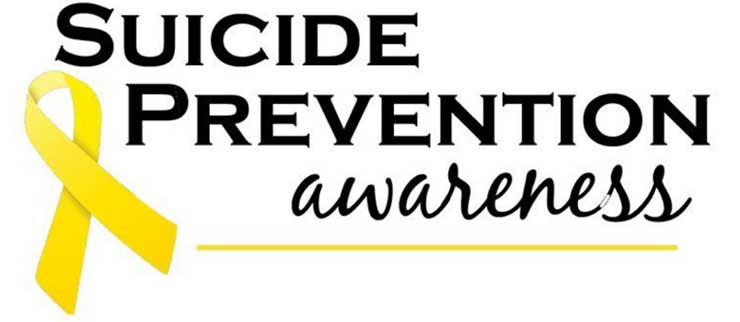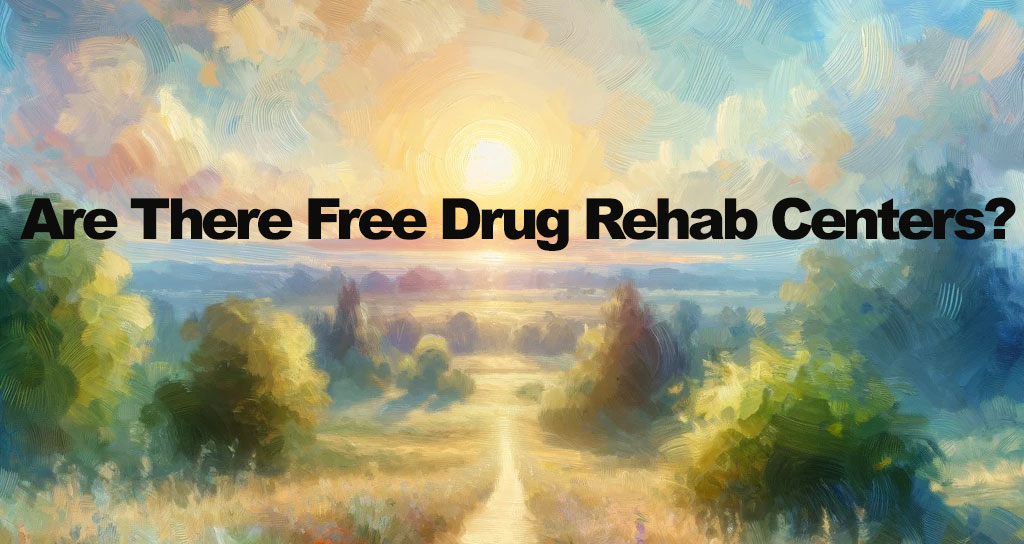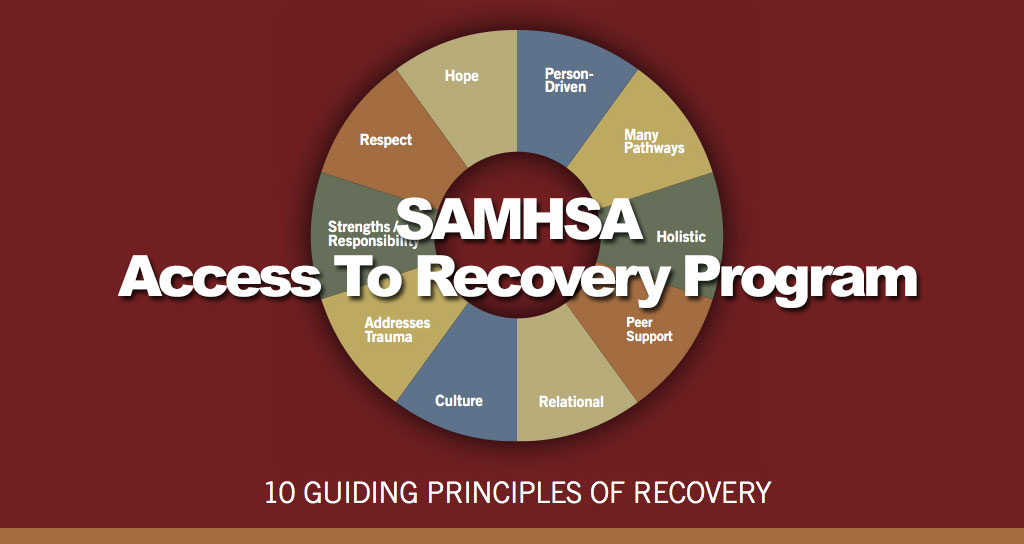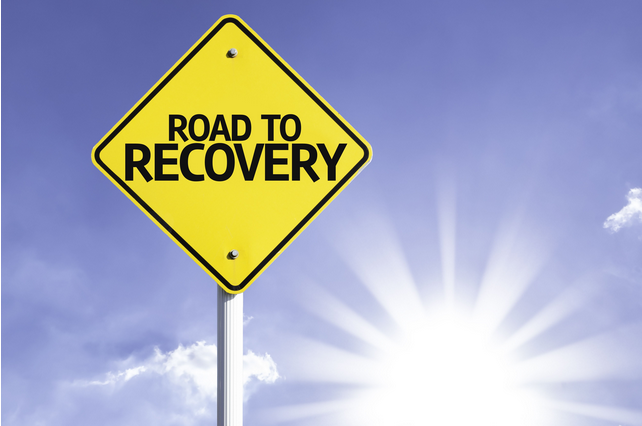
Suicide is a major public health problem, according to the Centers for Disease Control and Prevention (CDC). Its effects don't just injure the individual, but can be harmful to families, communities, and friendships.
Suicide is a complex issue, as there are many factors that contribute to the decision of someone who thinks they have no choice but to end their life. However, there are things we can all do to prevent suicide and mitigate the factors that may lead to someone feeling that suicide is an option. That's why agencies like the CDC, college campuses, and veteran prevention efforts are working hard to provide free national suicide prevention resources that promote coping strategies, increase access to resources, and enhance mental well-being so that the people we love have the support they need for years to come.
Suicide facts show some staggering effects this public health epidemic has on our nation. According to the CDC, suicide is
- In the top 9 leading causes of death among people aged 10 to 64
- The second leading cause of death for people aged 10 to 14 and 25 to 34
There are also some groups that have higher rates of suicide than others, with rates varying among race and ethnicity, and where someone may live. For example, veterans and American Indian/Alaskan Native populations experience higher rates of suicide.
Key suicide prevention strategies mitigate suicide by:
- Identifying people most at risk and train others how to respond to crises
- Strengthening housing and financial support
- Creating environments that protect individuals from harmful means, support healthy workplaces, and reducing community substance use and resources
- Improve mental health access and suicide resources
- Promote social support with peers and communities
- Increase coping and problem-solving skills
- Reduce harm, intervene, and prevent future risks
U.S. Suicide Stats
The CDC reported in 2020:
- 46,000 died by suicide
- 12.2 million adults seriously considered suicide
- 3.2 million made a plan
- 1.2 million attempted suicides
- 1 person died by suicide every 11 minutes
- Suicide rates increased 30 percent since 2000
- 90 percent of those who attempted suicide and survived did not go on to die by suicide
The Effects of Suicide
Suicide not only impacts our families, with the loss of a loved one, and the risk of serious injury, but it also impacts:
- Loved ones: The well-being of friends, loved ones, coworkers, and the community who experience grief and loss, shock, anger, guilt, and signs of depression and anxiety. They may even be at a higher risk of suicide themselves
- Economically: The financial cost of suicide costs the nation $490 billion in medical costs, lost work, value of life, and quality of life costs.
Suicide Among College Students
Suicide is a major cause of concern for colleges and universities across the U.S. According to the Suicide Prevention Resource Center, suicide is a leading cause of death among college students nationally. Many colleges and universities across the nation, supported by the Substance Abuse and Mental Health Services Administration (SAMHSA), are taking action by recognizing the importance of addressing suicide, promoting suicide prevention programming, and increasing access to resources.
Key suicide facts among college students:
- 7.7 percent of students seriously considered suicide, compared to 9 percent of the general population
- 2.3 percent made a plan, compared to 3.1 percent of other college-aged students
- 1.2 percent attempted suicide, versus 2.2 percent of teens their age not enrolled in college.
There are a number of risk factors associated with suicide, with one or more characteristics present increasing the likelihood of suicidality, including:
- Behavioral health disorders that include self-harm and depression
- Substance use and addiction
- Hopelessness
- Loneliness
- Risky behaviors
- Poor coping skills
- Interpersonal problems
- Chronic physical illness
- Physical, sexual, or psychological abuse
- School or work problems
- Insomnia
- Chronic stress
- Mental health problems at home
- Family violence
- Lack of support
- Limited access to health and behavioral healthcare
- Access to lethal means (firearms)
- Bullying and discrimination
- Racism
- Stigma associated with getting and receiving mental healthcare
There are also a number of protective factors that can reduce the likelihood of suicide, including mental wellbeing, strong social and community support, cultural or religious beliefs, strong problem-solving skills, a close relationship with teachers and mentors, and access and availability of healthcare and mental health resources.
Given that most mental health issues occur in the college age range (18-24), it is particularly important that colleges and universities support young people in their mental health. They are doing this by:
- Promoting social networks and connectedness
- Improving access to mental health services
- Identifying and supporting students at risk of suicide
- Responding to suicide
Differing Rates of Suicide Among Various Groups
There are some groups of people who have higher rates of suicide than others, according to the CDC, including:
- Veterans
- Tribal populations
- Middle-aged adults
- Certain Industries and occupations
- People with disabilities
Age
- Middle-aged adults (aged 35 to 64) account for 47.2 percent of suicides
- Suicide was highest in the middle-aged group among Non-Hispanic American Indian or Alaskan Native men
- Older adults (aged 75 or older), account for less than 10 percent of all suicides. However, men over the age of 75 have the highest rate compared to other age groups
- Youth and young adults (aged 10-24) account for 14 percent of suicides. While youth rank low in age groups of suicide, suicide is the third leading cause of death among young people. Other key information among youth and young population:
- Suicide is the second leading cause of death in the age group 10-14
- Youth have higher rates of emergency room visits for self-harm with an estimated 217,447 visits in 2019
- Suicide attempts were reported most among girls compared to boys, and Native American youth
- Emergency department visits among girls was doubled compared to 2001
People with Disabilities
The CDC report that adults with disabilities are three times more likely to report suicidal ideation compared to non-disabled adults. Research also suggests that people experiencing disabilities also report increased mental distress.
The CDC is working with some states, like Vermont, to reduce suicide disparities by reducing access to lethal means and creating more protective environments. That includes working with primary care providers to promote safe storage of firearms and strengthening delivery and access to care.
Industry and Occupation
Certain industries and occupations are at greater risk of suicide, depending on type of work activity and place of work. For instance, rates of suicide are higher among men who work in mining, quarrying, oil and gas extraction, and construction work, as indicated in the CDC data table below:
|
Industry |
Suicide Rates Among Males |
Suicide Rates Among Females |
|
Mining, quarrying, oil and gas extraction |
54.2 percent |
No data available |
|
Construction and Extraction |
49.4 percent |
25.5 percent |
|
Agriculture, fishing, forestry, and hunting |
36.1 percent |
No data available |
|
Transportation and Material Moving |
30.4 percent |
12.5 percent |
|
Transportation and Warehousing |
29.8 percent |
10.1 percent |
|
Other manual services, like mechanics |
39.1 percent |
No data available |
|
Installation, Maintenance and Repair |
36.9 percent |
No data available |
|
Protective Services |
No data available |
14 percent |
|
Healthcare Support |
No data available |
10.6 percent |
The CDC is working with certain states, like Massachusetts, to reduce the risk of suicide in certain occupations through the implementation of peer programs, identifying at risk groups, and increased access to healthcare and provider suicide education.
Geographic Region
People who live in rural areas, and tribal communities may disproportionately experience risk factors associated with suicide. Suicide rates decrease in more urban areas, and increase in more rural areas, according to CDC data. For instance, the suicide per 100,000 varies depending on population density:
- 10.9 percent in a large metropolitan area
- 12.5 percent in a large fringe metropolitan area
- 15.3 percent in a medium metropolitan area
- 17.2 percent in a small metropolitan area
- 18.3 percent in a non-metropolitan area
- 20.5 percent in a rural area
Suicide also varies depending on race and ethnicity. Rates are highest in rural areas among non-Hispanic Asian American males at 59.6 percent and non-Hispanic white males at 37.9 percent per 100,000.
The CDC is also working with states like North Carolina and Vermont to identify and support people at risk, reducing access to lethal means and providing gatekeeper training.
Suicide Among Veterans
Veterans experience suicide at a rate that is 52 percent greater than non-veterans. This is likely due to the extreme stress and trauma veterans face in active service, higher rates of substance use, and significantly greater mental health experiences, such as PTSD.
For instance:
- 1 in 10 soldiers returning from active duty in Iraq and Afghanistan abused drugs or alcohol
- More than 10 percent of US veterans struggle with substance use disorder
- 33 percent of veterans seeking treatment for addiction also have PTSD
- 20 percent of veterans who served in Iraq or Afghanistan suffer from either major depression or PTSD
Suicide Among Minority Groups
Rates of suicide are higher among certain racial and ethnic groups, and disparities exist among gender, with men having the highest rates of suicide.
The CDC reports the following rates of suicide per 100,000 population:
|
Ethnicity |
Men |
Women |
|
Non-Hispanic American Indian/Alaskan Native |
36 percent |
11.7 percent |
|
Non-Hispanic White Americans |
27.2 percent |
6.9 percent |
|
Non-Hispanic Native Hawaiian or Other Pacific Islander |
20 percent |
*No information available by the CDC |
|
Non-Hispanic Multiracial |
14.5 percent |
5 percent |
|
Non-Hispanic Black |
13.1 percent |
2.9 percent |
|
Non-Hispanic Asian |
9.5 percent |
3.7 percent |
|
Hispanic White |
13.1 percent |
3.0 |
|
Hispanic Asian |
9.6 percent |
*No information available by the CDC |
|
Hispanic Multiracial |
7.9 percent |
3.1 percent |
|
Hispanic Black |
4.6 percent |
1.8 percent |
|
Hispanic American Indian/Alaskan Native |
2.9 percent |
*No information available by the CDC |
Certain minorities within this table also experience higher rates of substance misuse. For instance:
- Among Asian Americans:
- 8 percent of Asian Americans have substance use disorder, compared to 7.4 percent of the total population
- 6 percent have an illicit drug disorder, compared to 3.2 percent of the total population
- Native Americans have experienced significant historical trauma and, consequently:
- Experience higher rates of PTSD, causing domestic violence and mental health disorders, including depression, PTSD, and low self-esteem
- Suicide is the leading cause of death for American Indian/Alaskan Native people aged between 10 and 34
- Suicidal ideation is high among children, impacting nearly 35 percent of children aged 9 to 12
- 10 percent of Native Americans have substance use disorders compared to 8 percent of white people.
Suicide Rates by State
In 2020, suicides by state are listed in the table below. States with the highest suicide rates are:
- Wyoming (32 percent per 100,000)
- Alaska (28 percent per 100,000)
- Montana (26 percent per 100,000)
- New Mexico (24 percent per 100,000)
- Idaho (23 percent per 100,000)
| STATE | RATE | DEATHS |
|---|---|---|
| Alabama | 16 | 793 |
| Alaska | 27.5 | 204 |
| Arizona | 17.6 | 1363 |
| Arkansas | 19 | 583 |
| California | 10 | 4144 |
| Colorado | 21.5 | 1302 |
| Connecticut | 9.3 | 364 |
| Delaware | 12.3 | 124 |
| Florida | 13.2 | 3135 |
| Georgia | 13.7 | 1491 |
| Hawaii | 12.9 | 184 |
| Idaho | 23.2 | 419 |
| Illinois | 10.5 | 1362 |
| Indiana | 15 | 1024 |
| Iowa | 18 | 552 |
| Kansas | 18.4 | 531 |
| Kentucky | 17.7 | 801 |
| Louisiana | 13.7 | 642 |
| Maine | 16.4 | 234 |
| Maryland | 9.2 | 585 |
| Massachusetts | 8.4 | 618 |
| Michigan | 14 | 1444 |
| Minnesota | 13.1 | 758 |
| Mississippi | 13.9 | 410 |
| Missouri | 18.2 | 1125 |
| Montana | 26.1 | 300 |
| New England | 14.9 | 283 |
| Nevada | 18.2 | 603 |
| New Hampshire | 16.4 | 234 |
| New Jersey | 7.1 | 679 |
| New Mexico | 24.2 | 516 |
| New York | 8 | 1642 |
| North Carolina | 13.2 | 1441 |
| North Dakota | 18.2 | 135 |
| Ohio | 13.8 | 1644 |
| Oklahoma | 21.9 | 869 |
| Oregon | 18.3 | 833 |
| Pennsylvania | 12.6 | 1694 |
| Rhode Island | 8.5 | 94 |
| South Carolina | 16.3 | 868 |
| South Dakota | 21 | 186 |
| Tennessee | 17.2 | 1220 |
| Texas | 13.3 | 3924 |
| Utah | 20.8 | 651 |
| Vermont | 18.1 | 117 |
| Virginia | 13.5 | 1202 |
| Washington | 15.2 | 1212 |
| West Virginia | 19.4 | 354 |
| Wisconsin | 14.5 | 866 |
| Wyoming | 30.5 | 182 |
Source: https://wonder.cdc.gov
What Are the Warning Signs of Suicide?
There are certain behaviors that someone may be thinking about suicide, according to the National Institutes on Mental Health. There are three key elements to look out for:
- Talking about wanting to die, guilt or shame, and/or being a burden to others, or seeking revenge
- Feelings like emptiness, hopelessness, sadness, having no reason to live, agitation, anxiousness, unbearable emotional or physical pain
- Changes to behavior look out for
- Researching ways to die
- Thinking about death often
- Making a plan
- Socially withdrawing
- Showing rage
- Saying goodbye to friends or family
- Giving away important possessions
- Changes to eating (eating more or experiencing a reduced appetite)
- Putting affairs in order like making a will
- Taking risks like driving dangerously
- Extreme mood swings
- Changes to sleep: sleeping more or less
- Using drugs or alcohol more often
These are signs of extreme stress and if they apply to you, or someone you love, you should seek help immediately. See below for steps to take to help someone at risk and an extensive list of suicide resources,
What Are the Risk Factors for Suicide?
Suicide happens to all kinds of people from all walks of life. While there are people at greater risk, there are a number of other factors that contribute to a greater risk of suicide such as:
- Depression, or other mental health disorders
- Substance misuse and addiction
- Chronic pain
- Family history of mental health disorders or substance use
- Violence at home, including sexual abuse
- Access to firearms
- Family history of suicide, or exposure to suicidal behavior among peers
- Stressful life events such as grief, legal problems, losing your job, or financial difficulties
- Having recently been released from prison
How to Identify Someone at Risk for Suicide
There are various screener tools used by emergency departments and other providers used to assess a person's risk for suicide, such as the Patient Safety Screen (PSS-3), the Ask Suicide-Screening Questions (ASK) Toolkit, Patient Health Questionnaire (PHQ-9), the Columbia Suicide Severity Rating Scale (C-SSRS), and the Suicide Assessment Five-Step Evaluation and Triage (SAFE-T).
Each of these screening tools ask a variation of the following questions:
- In the past few weeks, have you wished you were dead?
- In the past few weeks have you had little interest or pleasure in doing things?
- In the past few weeks, have you felt that you and your family would be better off if you were dead?
- Have you had thoughts of killing yourself in the last week?
- Have you thought about how you might do this?
- Have you had these thoughts and had the intention of acting on them?
- Have you ever tried to kill yourself?
- Have you done anything or made any preparation to end your life?
Research has shown that screening all patients can double the number of patients identified as being at risk. Other ways to identify people at risk are through the use of electronic records. For instance, the VA partnered with NIMH to predict suicide risk among veterans receiving VA healthcare.
Steps to Help Someone at Risk
For the public, there are five steps to be the one person to help someone who may be at risk of suicide, and may be experiencing emotional pain:
1. Ask: “Are you thinking of killing yourself?”
2. Keep them safe: Reduce access to lethal means. That may mean locking a firearm away, or better still storing it away from the person's home.
3. Be there: Listen to what the person is saying, how they are feeling, and that may help to reduce the risk of suicide.
4. Help them connect to resources: Contact the 988 Suicide and Crisis Lifeline if you, or someone you know, is experiencing a mental health crisis and you think they need support.
- Call or text 988
- Chat via 988lifeline.org
- Text 741741
5. Follow up: stay connected with the person after the crisis to ensure they are OK and have accessed mental health resources.
List of National Suicide Prevention Resources
We have compiled an extensive list of resources for families, youth and children, parents, educators, and those who have lost loved ones on suicide prevention, coping with loss, and crisis information. You'll find specific resources for racial, gender, and sexual minorities, too.
Crisis Lines
- National Suicide Prevention Lifeline: call 1-800-273-TALK or chat
- Suicide and Crisis Lifeline: chat with a trained counselor for free, 24/7/365
- Call or text 988
- Chat or visit the website: 988lifeline.org
- Crisis Text Line:
- Text HELLO to 741741 for adults
- Text Jason to 741741 for youth
- Veterans Crisis Line connects service members and veterans in crisis
- Dial 1-800-273-8255 and press 1
- Text 838255 to connect with a VA responder
- Veterans Crisis Chat line, visit: https://www.veteranscrisisline.net/get-help-now/chat/
Veterans Suicide Resources
- Operation Reach Out: Free suicide prevention app provided by Military Community Awareness, designed to prevent suicide among military personnel and veterans. Developed by a team of suicide prevention experts and designed to encourage people to reach out for help and stay connected with others
- Wounded Warrior Project: supports injured veterans to transition to civilian life
- Suicide Prevention Action Network: This suicide prevention site offers information and resources for veterans and their families. The site includes multiple resources for those who may be at risk for suicide
Youth Suicide Resources
- Teens Health: provides tools and resources to support teens
- The Jed Foundation: a nonprofit focused on protected emotional health and preventing suicide in teens and young adults, by providing skills training to thrive
- The Jason Foundation: resources for students, parents, educators, and youth workers on supporting mental health crisis in youth
- Stopbullying.gov: tools and resources to identify, prevent, and stand up to bullying safely
- The Society for the Prevention of Teen Suicide: education, information, and fact sheets for parents, educators, clinicians, and teens, to prevent teen suicide
Other Mental Health and Suicide Prevention Resources
- SAMHSA Suicide Prevention Resource Center: up-to-date information, research, strategies, toolkits, and interventions dedicated to preventing suicide
- American Association of Suicidology: facts, statistics, and resources about suicide and prevention and those who have survived suicide, including information on firearm safety
- Mental Health America: a site dedicated to mental health resources and finding help
- National Alliance for Suicide Prevention: the nation's public-private partnership (working with over 250 partners) for suicide prevention
- Friends for Survival: a nonprofit bereavement outreach organization for those who are grieving a suicide of family or friends
- Alliance of Hope: a place of healing and support for those who have lost loved ones to suicide
- Rocky Mountain MIRECC for Suicide Prevention: Information about talking to children about a suicide attempt in your family
- Zero Suicide: a foundation dedicated to improving patient safety for individuals under the care of health and behavioral systems
- #BeThe1To: the National Suicide Prevention's Lifeline campaign as part of National Suicide Prevention Month
- Suicide Awareness Voices of Education (SAVE): for those coping with loss and help for survivors of suicide, include a coping with loss book list
- The Dougie Center: support and resources for children who have experienced grief
- Man Therapy: a site for men to support mental health, and provide resources on topics such as grief, relationships, trauma, anger, and suicide (among others)



